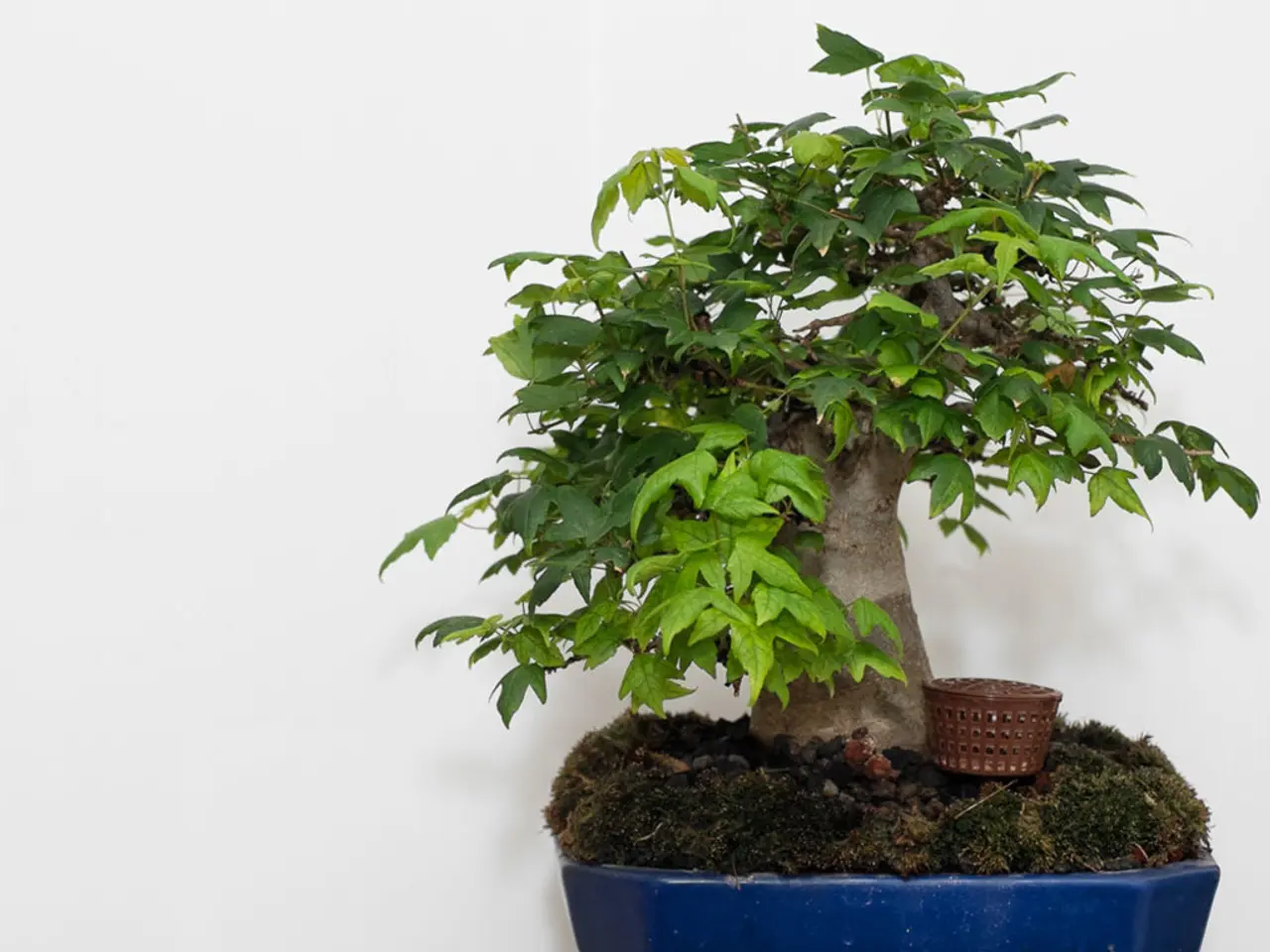Mastering the Microclimate: A Guide to Bonsai Care
Guide to Choosing Bonsai Trees Based on Climate and Growing Conditions
In the captivating world of Bonsai, understanding a species' specific climate requirements is key to creating a suitable microclimate that mirrors their natural habitat. By employing various techniques, such as shading, wind protection, and humidity control, you can craft an environment that nurtures your Bonsai tree.
Lighting
Natural light is essential, but for indoor Bonsai that need bright, indirect sunlight, such as Chinese Elm or Ficus, place them near east- or south-facing windows with filtered light. If natural light is insufficient, consider using grow lights to mimic the sun's nurturing touch.
Humidity
For Bonsai species that prefer high humidity, like Ficus and Chinese Elm, use humidity trays filled with water and pebbles beneath the pot or mist foliage regularly. On the other hand, for species adapted to dry environments, such as Juniper and Jade, ensure good airflow and avoid overwatering or excessive misting.
Temperature Control
Protect cold-sensitive species, such as Bougainvillea and Ficus, from temperatures below their tolerance thresholds by bringing them indoors or using frost covers in winter. During summer heatwaves, move your bonsai to cooler, shaded locations and increase watering to combat substrate drying.
Airflow
Maintain gentle airflow to reduce fungal diseases but avoid dry winds that can stress moisture-sensitive species. This is especially important indoors.
Watering
Adapt watering frequency to species and environmental conditions; bonsai in pots dry out quickly compared to natural soil. Overwatering or underwatering can both be harmful. Monitor substrate moisture and adjust accordingly.
By adjusting lighting, humidity, temperature, and airflow to these specific needs, you can establish ideal microclimates for each bonsai species that promote vigorous, healthy development.
Embracing the Synergy of Nature
The art of Bonsai cultivation converges with the rhythms of nature, as species selection syncs with local climate and conditions. When facing extreme weather fluctuations, selecting a Bonsai species tolerant of temperature and humidity swings is crucial. By embracing this synergy, cultivators can orchestrate a symphony of growth, coaxing miniature trees to flourish in their chosen environments.
Repotting and Protection
To guarantee peak health, repotting a Bonsai every 2-5 years is recommended, considering factors like root growth, soil degradation, and seasonal climate shifts. To safeguard outdoor Bonsai from wildlife and pest damage, deterrents such as physical barriers, repellents, and organic pest control methods can be employed.
Expanding the Boundaries of Bonsai Artistry
By replicating the conditions found in their natural habitat, Bonsai can thrive even in areas with less-than-ideal climates. Through deliberate matching of species to climate, the boundaries of Bonsai artistry expand, yielding a kaleidoscope of possibilities for these living, breathing works of art.
- For those interested in expanding their home-and-garden lifestyle to include home gardening, mastering the microclimate for Bonsai trees could be an engaging and beautiful addition, as understanding the specific climate requirements for each species allows you to create a suitable environment that mirrors their natural habitat.
- By carefully selecting Bonsai species that align with your home's microclimate, you can enthusiastically embrace the synergy of nature, as species selection syncs with local climate and conditions, resulting in a thriving Bonsai lifestyle that enhances your home-and-garden ambiance.




